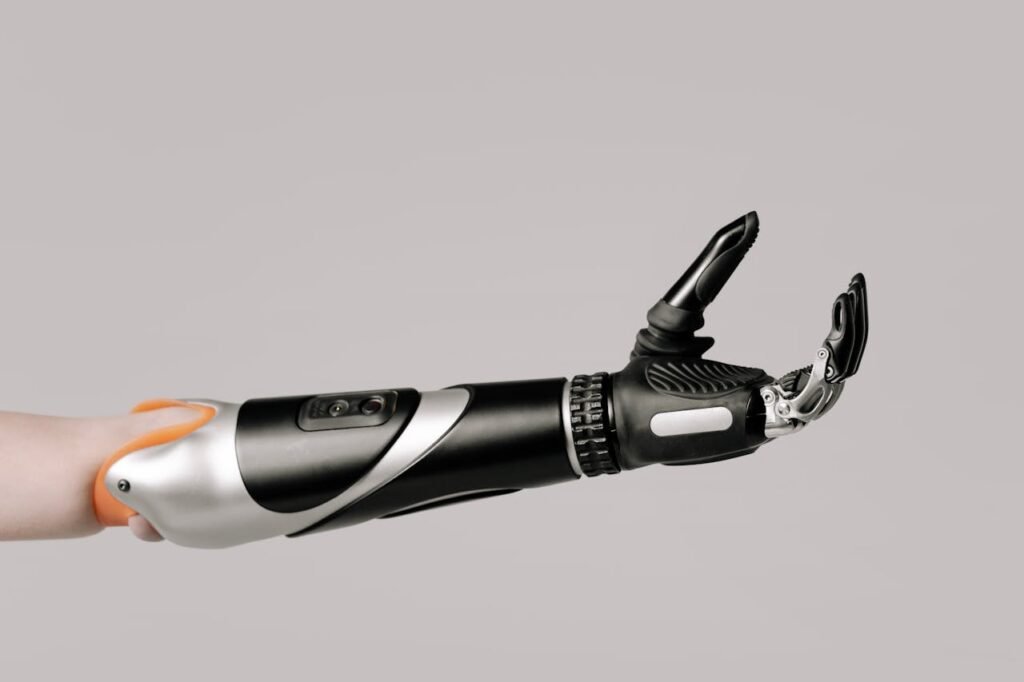Trying a prosthetic hand for the first time is an unforgettable experience. It’s not just about function—it’s about how it feels, how it moves, and how naturally it becomes part of you. But when you hear about different types of prosthetic hands, like mechanical and bionic, it’s easy to feel unsure which one might fit your life best.
That’s exactly where a trial makes all the difference. A back-to-back comparison between a Mech Hand and a Bionic Hand lets you see, touch, and feel the contrast between human-powered motion and advanced muscle-controlled technology. It’s not a technical debate—it’s a personal discovery.
At RoboBionics, we believe in letting users experience both before making a choice. Because your comfort, lifestyle, and confidence matter more than just features on paper.
In this article, we’ll walk you through what really happens in a Mech Hand vs Bionic Hand prosthetic trial—what you’ll try, how each feels, and what you can expect in daily life. You’ll get a clear, human view of both technologies, without jargon or sales talk—just honest insight from our experience helping hundreds of users across India.
Understanding the Core Difference
What Powers Each Hand
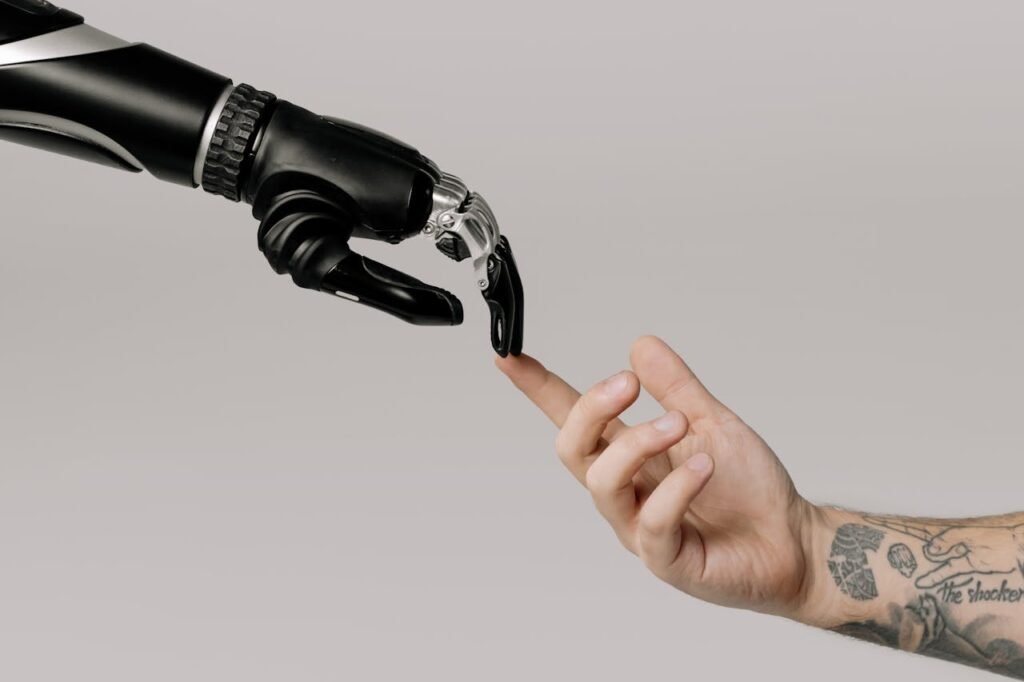
The Mech Hand and Bionic Hand may look similar at first glance — both replace a lost limb, both restore grip and movement — but the way they work is completely different.
A Mech Hand, short for Mechanical Hand, is powered by your body’s natural movement. You control it through cables, levers, or harness systems that respond to motion in your shoulder or elbow. It doesn’t use electricity or sensors; it’s all mechanical force.
A Bionic Hand, on the other hand, runs on electricity and intelligence. It uses tiny sensors that detect your muscle signals, also known as myoelectric impulses. These signals are translated by an onboard microprocessor into finger and hand movements.
So, while the Mech Hand moves because of you, the Bionic Hand moves with you — almost like an extension of your thoughts.
How That Feels in Real Life
During a trial, this difference is easy to sense. When you wear the Mech Hand, you’ll feel the effort coming directly from your shoulder or upper arm muscles. The movement feels physical and deliberate.
When you wear the Bionic Hand, you’ll notice something different — a sense of effortlessness. A small muscle flex can make the fingers open or close automatically. It feels smoother, faster, and surprisingly intuitive.
Neither is “better” in isolation. It’s about what feels natural to you, what fits your routine, and what kind of control you prefer.
The Role of Power and Precision
Power in a Mech Hand comes from your body strength. That means you decide how tightly to grip or release. It’s steady and reliable but limited by your muscle endurance.
In a Bionic Hand, precision is its greatest strength. The sensors pick up even small muscle changes, allowing you to hold a glass delicately or grip a heavy bottle with ease. The Grippy™ Bionic Hand, for example, adjusts its pressure automatically with its Sense of Touch™ feature.
This distinction becomes clear in trials — where your hand tells you what feels right long before your mind does.
Maintenance and Simplicity
Mechanical prostheses are simpler in design. They require no batteries, charging, or electronic components. That makes them easy to maintain and perfect for users who prefer straightforward functionality.
Bionic Hands, while slightly more complex, offer much more in terms of movement variety and adaptability. They need occasional charging and care for the electronic parts but reward you with comfort and flexibility.
When you try both, you’ll understand the difference not as a feature list but as a feeling — one that helps you decide what truly suits you.
Inside the Mech Hand Trial
The Fitting Process
When you start the Mech Hand trial, your prosthetist will fit a demo socket on your residual limb. The fit is adjusted to make sure there’s no pressure or discomfort. Then, they’ll attach the mechanical system — usually cable-driven — that connects to your shoulder harness.
This harness is what transfers your motion into the hand’s movement. When you move your shoulder forward, the cable pulls, and the hand closes. When you relax, it opens again.
You’ll immediately sense how your body powers the device. It’s mechanical, responsive, and gives instant feedback with every motion.
Trying Everyday Tasks
Once fitted, your trial begins with basic daily activities. You might hold a bottle, lift a cup, or pick up a pen. Each action requires a small shoulder movement to activate the grip.
The Mech Hand provides steady control for these activities. You’ll notice that grip strength depends entirely on how much you pull the cable — a more physical experience compared to electronic control.
It’s great for people who prefer reliability and simplicity without worrying about electronics or charging.
Feeling the Weight and Balance
The Mech Hand is lightweight and balanced because it doesn’t contain motors or batteries. During the trial, you’ll notice how natural it feels while wearing it for longer periods.
However, the effort needed to control it comes from your muscles, so extended use might feel tiring at first. Most users get used to this quickly with practice and muscle strengthening.
For people who want durability and independence from technology, this feel can be very satisfying.
How Control Differs from a Bionic Hand
Unlike the Bionic Hand, which senses muscle signals, the Mech Hand responds only to physical movement. There’s no electrical feedback or fingertip sensitivity — the control is completely mechanical.
That means you’ll always know what’s happening, but you’ll also feel more manual effort. Think of it like driving a car with manual gears — more direct, but also more involved.
For some, that engagement is exactly what they prefer. It gives a sense of control rooted in their own strength.
Who Usually Prefers the Mech Hand
During our trials across India, we’ve found that many users who work in physical or outdoor environments lean toward mechanical prostheses. Farmers, manual workers, and people who need rugged, low-maintenance solutions appreciate its simplicity.
It’s also a great choice for users who may not have consistent access to charging facilities or who live in rural areas.
The Mech Hand becomes a trusted companion — simple, sturdy, and dependable.
Inside the Bionic Hand Trial
How the Setup Begins
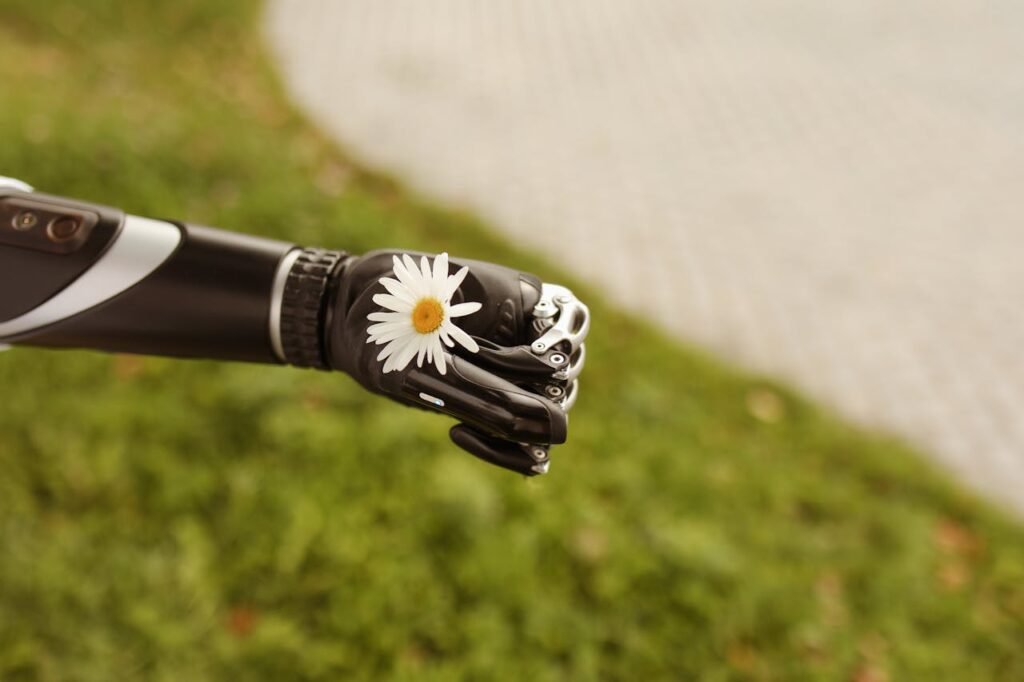
When you start the Bionic Hand trial, your prosthetist first checks your residual limb for muscle activity. They identify the muscle groups that produce myoelectric signals strong enough to control the device.
Small sensors, called electrodes, are then placed on those muscle areas. When you flex your muscles, these sensors detect tiny electrical signals that control the hand’s movements.
You’ll then wear the Grippy™ Bionic Hand fitted to a temporary socket customized for your trial. As soon as it’s in place, the magic begins.
Your First Movements
The first time you open and close the Bionic Hand using your muscle signals feels incredible. You don’t have to move your shoulder or pull any cables — just think about moving your hand, and it happens.
You’ll see each finger move smoothly, each grip adjust automatically. The motion feels controlled yet natural, as if the hand already understands you.
This is where most users pause — not from confusion, but from amazement. That moment of rediscovery often brings quiet smiles, sometimes tears. It’s not just a prosthesis responding; it’s your body finding its rhythm again.
Trying Real-World Tasks
During the Bionic Hand trial, you’ll try holding different objects of varying weights — cups, bottles, pens, even a phone. The Sense of Touch™ feature in the Grippy™ hand automatically adjusts grip pressure, ensuring you don’t drop or crush items.
You can switch between different grip types — pinch grip, key grip, cylindrical grip — each designed for specific daily actions. The transition is seamless and effortless once you understand your muscle cues.
The trial isn’t about performance; it’s about experiencing how intuitive control feels.
The Learning Curve
At first, controlling a Bionic Hand can feel strange. Your muscles may need a few minutes to understand how to signal correctly. But your prosthetist will guide you through each motion, teaching you how to use your muscle strength efficiently.
By the end of your first session, you’ll already feel more confident. Your brain begins adapting quickly — it learns to associate muscle signals with hand actions almost instinctively.
This adaptability is what makes myoelectric prostheses so remarkable. Your mind and hand begin working together again, one signal at a time.
Comfort, Weight, and Feel
Despite having motors and a battery, the Grippy™ Bionic Hand is surprisingly light. Its ergonomic design distributes weight evenly across your arm. You’ll notice it doesn’t feel bulky or heavy during the trial.
The materials are skin-friendly and durable, ensuring you can move naturally without discomfort. Most users describe it as feeling “alive” — not because it moves, but because it responds.
The sense of connection you feel during this trial is often what helps people decide — it’s less about technology, more about emotion.
Comparing Real-World Usability
How Each Fits into Everyday Life
When you finish trying both prostheses during your trial, one of the most common questions that arises is, which one feels easier to live with every day?
The answer depends on your lifestyle. The Mech Hand fits users who want simplicity and durability. It doesn’t require charging or setup, and once you’ve learned to operate it, it becomes part of your routine like any other tool.
The Bionic Hand, meanwhile, brings an experience that feels closer to natural movement. It reacts faster, offers smoother control, and minimizes physical effort. For people with active urban lives or jobs involving precision work, this hands-free control makes daily tasks effortless.
Each prosthesis has its rhythm, and your trial helps you find which rhythm feels most natural to you.
Movement Fluidity
During your demo, you probably noticed how differently each hand moves. The Mech Hand’s grip depends on mechanical tension. That means the movement is slightly more rigid — you’ll sense when you reach the end of a grip because it physically stops.
The Bionic Hand, powered by motors and sensors, moves more fluidly. Each finger bends individually, allowing more natural motion. When you release your muscles, the hand opens smoothly, with a response time that mirrors your intention almost instantly.
This difference is subtle but important. In mechanical systems, movement is deliberate and requires thought. In bionic systems, it becomes subconscious — as if your body remembers what to do without instruction.
Adapting to Work and Hobbies
If your daily life involves manual labor, lifting, or rugged tasks, the Mech Hand may feel more reassuring. Its purely mechanical design means it can withstand rough handling without concern for electronics.
However, if you spend most of your day working with devices, paperwork, or tools that need fine precision, the Bionic Hand gives you that freedom. Its muscle-based control allows smooth transitions between tasks like typing, writing, or even using touchscreens.
One user from Jaipur, who works as a draftsman, described the difference beautifully: “The Mech Hand gave me control, but the Bionic Hand gave me grace.”
Both are capable, but how they fit your world is what truly matters.
Comfort Over Long Wear
When you wear a prosthesis for hours, comfort becomes more important than anything else.
The Mech Hand is lightweight and requires no electronics, making it physically comfortable. However, because you use shoulder motion to control it, long use may cause mild fatigue, especially for new users.
The Bionic Hand distributes control across your muscles, so it feels easier on your upper body. You don’t rely on large motions — just light flexes. It also includes cushioning inside the socket, ensuring even pressure distribution and reduced skin friction.
During trials, we always recommend wearing each prosthesis for at least 30 minutes. That’s when you truly notice how your body responds — not just physically, but emotionally too.
Strength vs. Finesse
Think of the Mech Hand as strength and reliability, and the Bionic Hand as precision and ease.
Mechanical prostheses provide strong, stable grips that you control directly. You can hold heavier items without worrying about sensors or calibration.
Bionic prostheses give you precision. They can handle delicate items like eggs, papers, or keys with care — automatically adjusting grip force based on your muscle signal.
Neither is universally “better.” Each represents a different kind of intelligence: one powered by muscle, the other by microprocessor.
Maintenance and Longevity
Taking Care of a Mech Hand
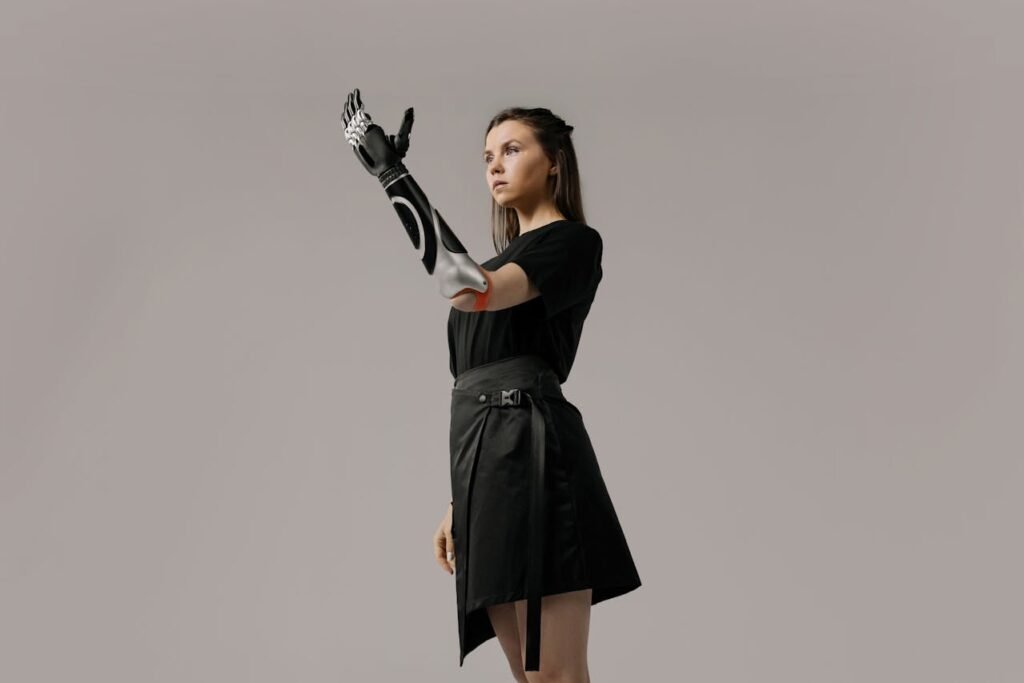
Maintaining a Mech Hand is straightforward. Because it’s built without electronics, all you need to do is keep it clean and occasionally lubricate the moving joints if needed.
The cables and harness can last several years but may need minor adjustments over time as your body changes. These adjustments are easy and quick — most can be done during routine check-ups.
Since there’s no wiring or battery involved, you never have to worry about moisture damage or power issues. This makes it an excellent choice for those living in rural or humid areas.
Caring for a Bionic Hand
The Bionic Hand requires a little more attention, but its maintenance is still simple. You’ll need to charge the battery daily — usually overnight — and keep the sensors clean for consistent performance.
Avoid water exposure or extreme temperatures, as they can affect electronic components.
At RoboBionics, our Grippy™ Bionic Hand is designed to make this process easy. Every part is modular and replaceable, meaning that if any section needs servicing, it can be done locally without sending the entire hand abroad.
This combination of advanced technology and easy maintenance is what makes it a favorite among professionals.
Durability and Lifespan
Both prostheses are built to last, but their lifespan depends on usage. A Mech Hand can easily last several years with minimal care. A Bionic Hand, while slightly more sensitive, maintains high performance for years with proper maintenance and regular calibration.
Because RoboBionics manufactures 60 out of 64 components locally, spare parts and servicing are always available at short notice. This ensures that neither prosthesis becomes a burden over time.
We’ve designed both systems with one goal — reliability. Whether you choose Mech or Bionic, your hand will support your lifestyle, not limit it.
Cost and Value Comparison
Upfront Costs
Price is a major factor for most users, and we believe in complete transparency.
A Mech Hand is generally more affordable because it involves fewer components. It’s ideal for people seeking a practical, durable prosthesis that performs essential tasks without added complexity.
A Bionic Hand, such as the Grippy™, costs more because it uses advanced sensors, motors, and processors. But with this comes a richer experience — smoother control, sensory feedback, and customizable functions.
At RoboBionics, the Mech Hand starts at around ₹1.5 lakh, while the Grippy™ Bionic Hand is priced between ₹2.15 and ₹3 lakh — still far more affordable than imported prostheses costing up to ₹10 lakh or more.
EMI and Accessibility
Both types of prostheses can be purchased using flexible EMI plans. We offer simple monthly payment options so you can begin using your device immediately without waiting.
We’ve seen that many users who start with a Mech Hand later upgrade to a Bionic model once they gain confidence and muscle strength. The EMI structure ensures that either choice fits comfortably into your budget.
Accessibility isn’t just about price — it’s about peace of mind. We want you to focus on your progress, not your payments.
Value Beyond Price
The real value of a prosthesis isn’t just its cost — it’s what it gives back to your life.
A Mech Hand gives you reliability, simplicity, and independence. It’s the perfect tool for users who prioritize stability over automation.
A Bionic Hand offers emotional and physical transformation. It restores not just function but fluidity, grace, and confidence.
Choosing between them is like choosing between two kinds of freedom — one built on strength, the other on sensitivity.
Emotional Differences During Trials
The First Moment of Control
When you try both hands back-to-back, something remarkable happens. The Mech Hand makes you feel strong — you can see and feel your effort translating directly into movement. It’s empowering in its own, raw way.
The Bionic Hand, however, evokes a different kind of emotion. The first time you move its fingers with a small muscle twitch, it feels almost magical. You realize you don’t need to fight for movement anymore — it flows effortlessly.
Some users describe it as “getting their hand back.” Others say it feels like the hand was always waiting for them to return.
These feelings matter because prosthetic choice isn’t just mechanical — it’s deeply human.
The Confidence Shift
After trying both hands, most people begin imagining real-life situations — cooking, driving, working, shaking hands. This visualization helps them decide what kind of confidence they want to feel each day.
The Mech Hand builds confidence through mastery. You feel proud of learning its technique, like mastering a skill through discipline.
The Bionic Hand builds confidence through ease. It lets you move freely without effort or thought. You trust it instantly, and that trust grows into confidence.
Both create empowerment — just through different paths.
Family and Emotional Reactions
Families who witness these trials often share emotional moments too. Parents, spouses, or children watch in awe as the user moves their new hand for the first time.
It’s more than a demo — it’s a rediscovery. And that’s when everyone realizes: this isn’t about technology at all. It’s about giving life back its rhythm.
Adapting to Life After the Trial
Making the Choice That Fits You
After trying both prosthetic types, your decision often becomes clearer — not because of what looks better on paper, but because of how each hand feels on you.
Some users walk away drawn to the simplicity and reliability of the Mech Hand. They like that it works without charging, that it’s light and sturdy, and that every motion comes from their own strength. It feels practical and familiar — a dependable tool that just works.
Others lean toward the Bionic Hand because of its fluid control and natural motion. The subtlety of myoelectric response, the freedom from harnesses, and the feeling of precision can be life-changing. It feels like your own body — an extension of your intent rather than a device you command.
We always remind users: there’s no “better” choice. There’s only your choice. The right prosthesis is the one that makes your life simpler, more comfortable, and more complete.
The Adjustment Period
Regardless of which prosthesis you choose, the first few weeks after fitting are about adjustment. Your body needs time to learn how to move efficiently with your new hand.
For Mech Hand users, the adjustment focuses on developing shoulder coordination and endurance. You’ll gradually build muscle memory until controlling the hand feels second nature.
For Bionic Hand users, the learning curve is more about fine-tuning muscle signals. Within a few sessions, you’ll understand exactly how much to flex or relax for precise movement.
Our prosthetists guide you through each step. You’re never left figuring it out alone.
Emotional Adaptation
The emotional adjustment can be just as important as the physical one. It’s completely normal to feel a mix of excitement, pride, and sometimes frustration in the early weeks.
The first time you successfully hold a glass, tie your shoelaces, or write your name again — that’s a moment of triumph. It reminds you why this journey matters.
But there will also be days when the fit feels awkward or when control doesn’t come easily. That’s where patience matters most. Every small practice session builds toward a bigger transformation.
Daily Routine Integration
Once you begin using your prosthesis daily, it becomes part of your rhythm. You’ll start doing small tasks first — picking up lightweight items, turning pages, or adjusting your phone. Then, slowly, you’ll move to more complex ones like cooking, working, or driving.
Most users report that within two months, their prosthesis feels like a natural part of their life. The transition from “trying” to “trusting” happens quietly but steadily.
At RoboBionics, our support doesn’t stop after delivery. We stay in touch during this phase to guide, encourage, and ensure your comfort every step of the way.
Training and Rehabilitation
The Role of Training
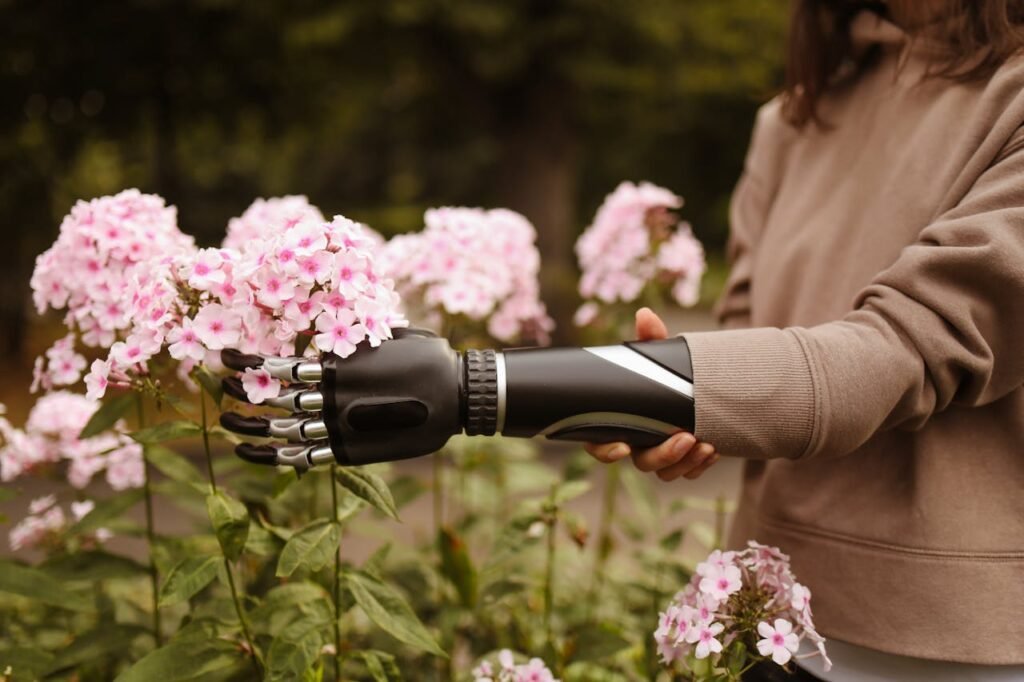
Prosthetic training isn’t just about mechanics — it’s about communication between your body and the device.
During training, your prosthetist and physiotherapist help you learn control techniques, balance, and coordination. These sessions make movement smoother and reduce fatigue during daily use.
For mechanical hands, training builds shoulder and upper-body coordination. For bionic hands, it focuses on reading muscle feedback and controlling grip strength through subtle flexes.
Each session is gentle, guided, and entirely at your pace. Progress may start slow but quickly accelerates once you gain confidence.
Gamified Rehabilitation
To make training more enjoyable, RoboBionics offers a gamified rehabilitation app that connects to your bionic hand. It turns exercises into interactive games that react to your movements.
You’ll practice gripping, rotating, and releasing through fun digital challenges. This not only builds muscle control faster but keeps motivation high.
It’s rehabilitation that doesn’t feel like therapy — it feels like play.
Practicing in Real-Life Scenarios
Your training doesn’t stay confined to the clinic. You’ll be encouraged to practice at home with familiar objects — utensils, pens, door handles, or even clothing.
The idea is to bring the prosthesis into your actual life. Real situations teach your muscles to adapt naturally, building automatic reflexes.
Small victories, like cutting vegetables or typing smoothly, reinforce your confidence. Before long, you’ll find your body and mind responding together — without conscious effort.
Support During Rehabilitation
We understand that adjusting to a new prosthesis can sometimes be overwhelming. That’s why our team stays connected through follow-up calls and virtual check-ins.
If you ever face discomfort, difficulty, or frustration, we help troubleshoot right away — whether it’s socket pressure, sensor response, or alignment.
Our goal is simple: to make sure your prosthesis never feels like work, only like progress.
Comparing Long-Term Living with Mech vs. Bionic
Long-Term Comfort
Over the years, both hands evolve with you — physically and emotionally.
The Mech Hand continues to deliver solid reliability. It’s easy to maintain and rarely needs servicing. For users with active, outdoor lifestyles, it remains a durable companion.
The Bionic Hand, meanwhile, adapts beautifully to changes in your life. As you become more comfortable, you’ll explore new ways to use it — from typing on a keyboard to cooking or even driving.
Its rechargeable battery and responsive sensors ensure daily comfort without strain. Many users say that over time, they forget they’re wearing a prosthesis at all.
Maintenance and Upgrades
Because both models are locally built, servicing is convenient and affordable. Replacement parts are always available through our network of partner clinics across India.
The Grippy™ Bionic Hand is also upgrade-ready. When we release new features or improved sensors, existing users can integrate them without replacing the whole device.
The Mech Hand’s simplicity keeps it timeless. With basic care and occasional cable adjustments, it performs reliably for years.
At RoboBionics, our philosophy is clear — we build prostheses that grow with you, not apart from you.
Independence and Confidence
Long-term independence isn’t just about physical ability; it’s about emotional freedom. The ability to wake up, wear your prosthesis, and move through your day without thinking twice — that’s true independence.
Mech Hand users often express pride in their strength. They love that they can rely solely on their own power.
Bionic Hand users often describe quiet amazement — the sense of ease and naturalness that technology brings back into their lives.
Both journeys lead to the same destination: confidence.
Why RoboBionics Leads the Way in Prosthetic Innovation
Indian Innovation, Global Quality
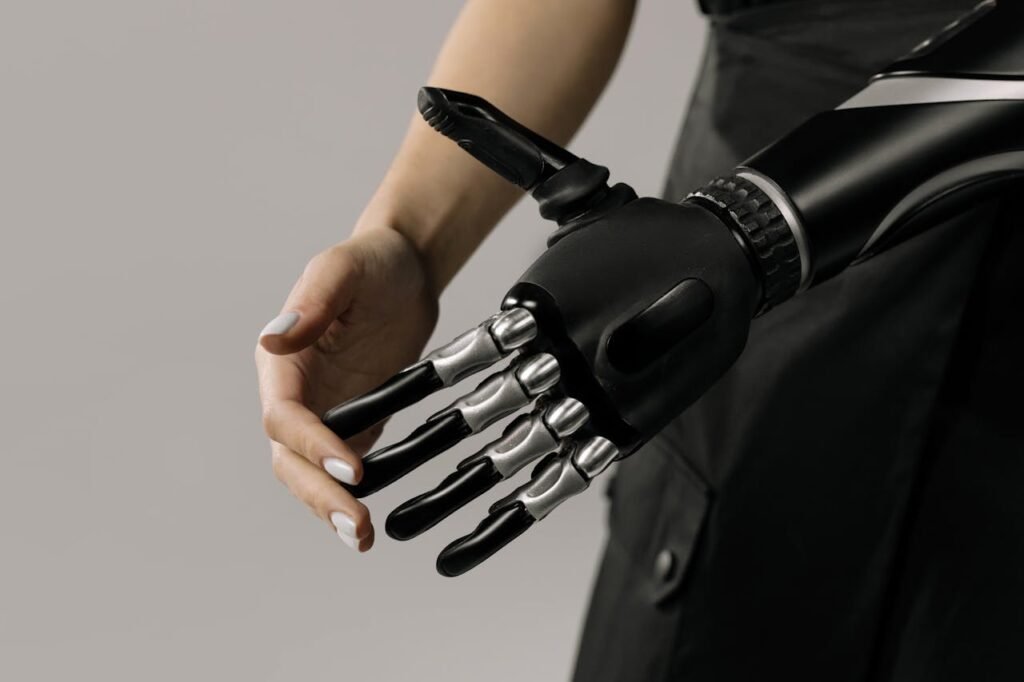
RoboBionics was founded with one goal — to make world-class prosthetic technology accessible and affordable to every Indian.
While most bionic hands in India are imported and priced beyond reach, our Grippy™ line offers the same sophistication at one-fifth the cost. With 60 of 64 components made locally, we proudly combine global engineering with Indian innovation.
We’ve designed our products for Indian conditions — from heat and humidity to everyday wear and tear. Every part is built to last, perform, and empower.
Human-Centered Design
Our approach starts with empathy, not machinery. Before we design, we listen — to users’ needs, dreams, and daily challenges.
That’s how innovations like Sense of Touch™ were born — a technology that lets users feel grip pressure, adding realism to every movement.
Whether mechanical or bionic, every RoboBionics prosthesis is built around the user — not the other way around.
Trusted Nationwide
We’re recognized by the Government of India under the Startup India initiative and have been finalists at the prestigious Extreme Tech Challenge.
But beyond awards, what matters most are the stories — thousands of Indians who’ve regained movement, confidence, and dignity through our hands.
From major cities to remote towns, our partner clinics ensure access, service, and support wherever you are.
Affordable Freedom
Freedom should never be a luxury. That’s why every product we build — from the Mech Hand to the Grippy™ Bionic Hand — comes with flexible EMI options and transparent pricing.
We don’t just sell prosthetics; we deliver independence.
When you book a demo, you’re not stepping into a sales meeting — you’re stepping into a new possibility.
Taking the First Step
How to Book Your Trial
If you’re ready to experience the difference yourself, you can book your Mech vs. Bionic Hand trial easily at www.robobionics.in/bookdemo.
Our team will reach out, schedule your session, and guide you through everything — from preparation to your first movement.
You’ll get to experience both hands side by side, feel how they respond to you, and decide what fits your life best.
What You’ll Take Away
No matter which prosthesis you choose, the trial will leave you with something priceless — clarity. You’ll understand how each hand feels, how it reacts to your body, and how it could change your daily life.
That understanding gives you the confidence to make an informed, personal decision — one that aligns with your goals, not anyone else’s.
The RoboBionics Promise
We promise you transparency, compassion, and technology that works for real lives. From your first demo to your last check-up, we’ll walk beside you with care that doesn’t end at delivery.
Because this isn’t just about restoring motion — it’s about restoring moments, confidence, and the joy of doing things your own way.
At RoboBionics, we build more than prosthetics. We build freedom.



